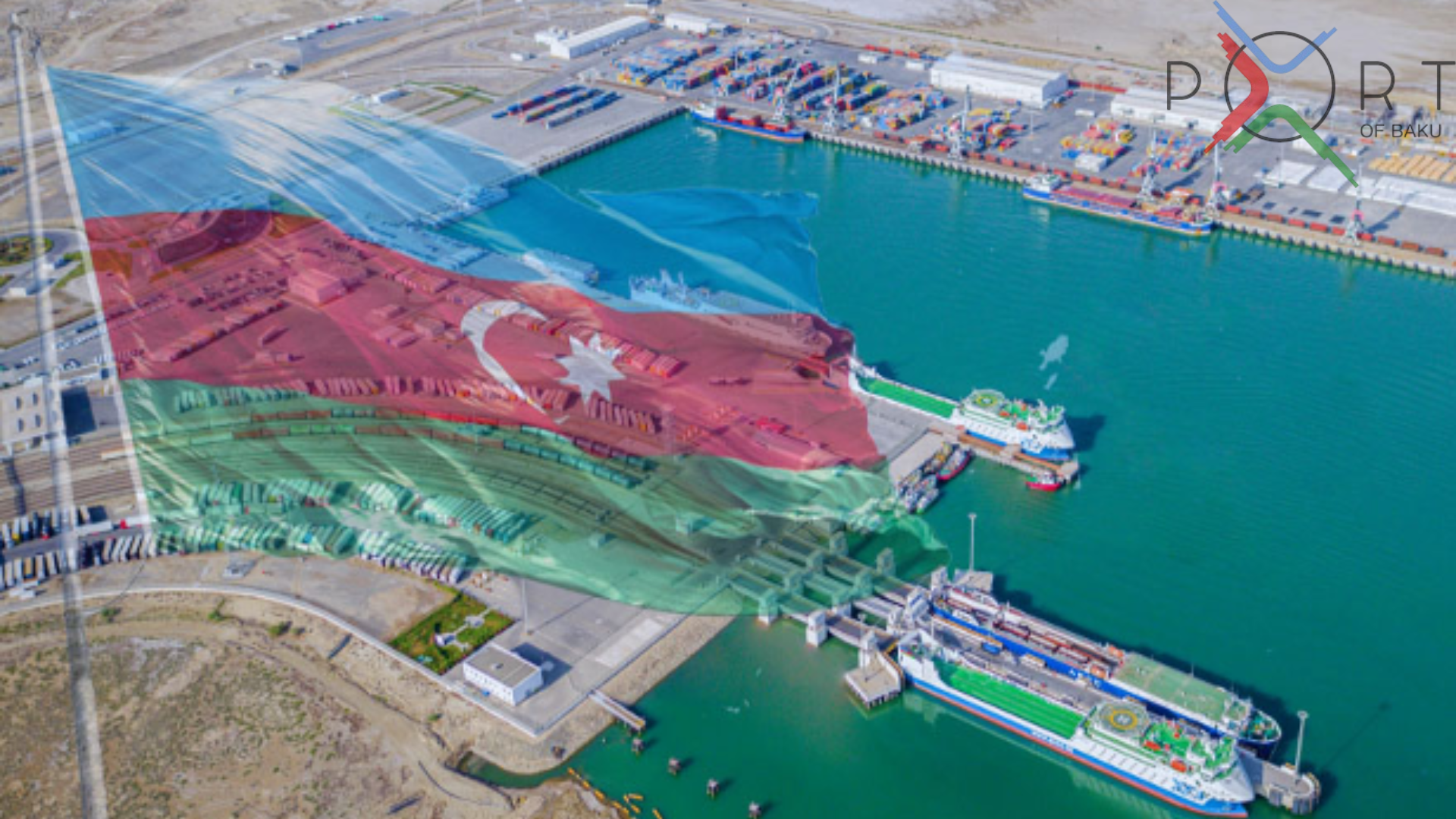Azerbaijan’s Port of Baku emerges as Eurasia’s next logistics powerhouse

The Middle Corridor—officially known as the Trans-Caspian International Transport Route (TITR)—is rapidly evolving into one of Eurasia’s most vital arteries for trade, logistics, and geopolitical cooperation. At the heart of this transformation is Azerbaijan, which, alongside its Central Asian partners and with strong support from China, is reconfiguring the map of overland freight transit between East Asia and Europe.
On June 30, 2025, a new multimodal freight route was launched connecting Beijing and Baku. The new "rail-sea-rail" line begins at the International Land Port in Beijing’s Fangshan District, carrying over 100 containers of industrial cargo—including auto parts and machinery—through Kazakhstan, across the Caspian Sea, and into Azerbaijan via the Port of Baku. The entire journey will take just 15 days, offering a faster and more reliable alternative to traditional maritime and northern overland routes.
Geopolitical instability has forced a global rethink of trade logistics. The Russia–Ukraine war has turned the Northern Corridor into a high-risk zone, while Houthi missile attacks in the Red Sea have disrupted shipping via the Suez Canal. In contrast, the Middle Corridor—passing through Kazakhstan, Azerbaijan, Georgia, and Türkiye—offers political stability, shorter transit times, and increasing investment in rail and port infrastructure.
Delivery times along the TITR have dropped dramatically, from over 50 days in 2018 to just 19–23 days today, with targets to reduce this to 15 days for container block trains. Cargo volume has surged from 840,000 tonnes in 2021 to 4.5 million tonnes in 2024, with China–Europe freight volumes via the corridor rising nearly 28-fold, according to Kazakhstan’s latest data.
The International Union of Railways projects that by 2025, the Middle Corridor will handle up to 730,000 TEUs, with more than 63% of transit volumes crossing Azerbaijani territory.
The Beijing–Baku freight service is more than just another logistical development—it is a strategic pillar of China’s Belt and Road Initiative (BRI). The Azerbaijan–China Intergovernmental Agreement on Multimodal Transport, signed in April 2025, marked a turning point in bilateral cooperation on trade and logistics. Since 2019, when the first China Railway Express trains reached Baku, Chinese cargo transit through Azerbaijan has expanded exponentially. By 2025, up to 1,000 freight trains could run under the "Baku–Xi’an" model.
Recent diversification also includes the Turkmenistan leg of the corridor. In June 2025, a freight block train from China’s Jinhua city arrived at Turkmenbashi port, to be forwarded to Azerbaijan via the Port of Alat, easing pressure on the Aktau–Alat route and enhancing east-west connectivity.
This growing web of connections positions Azerbaijan not just as a transit country, but as a co-architect of Eurasia’s transport infrastructure.
Türkiye’s Transport Minister Abdulkadir Uraloğlu emphasized Ankara’s interest in joining the Zangezur Corridor and accelerating work on the TITR, aiming to reduce freight delivery times to Europe to a record 13 days.
This is part of Türkiye’s broader strategy to diversify trade routes amid tensions in the Strait of Hormuz, and to bolster east-west supply chains that bypass unstable zones.
According to a statement by Azerbaijan Railways CJSC (ADY), the Port of Baku is becoming a central logistics hub in the global supply chain. As a founding member of the Middle Corridor initiative since 2017, Azerbaijan has actively partnered with China and Central Asian countries to modernize infrastructure and digitalize customs processes.
Forecasts for 2025 project that the TITR will carry 5.2 million tonnes of cargo, of which 2.5 million tonnes will be dry cargo (approximately 96,000 TEUs) and 1.7 million tonnes will be oil. By 2027, that number could climb to 10 million tonnes, supported by further investment and integration of new partner states.
The Middle Corridor is no longer simply a response to sanctions or conflict-induced bottlenecks. It is becoming a permanent feature of the new trade geography, with Azerbaijan serving as both linchpin and logistics innovator. From joint agreements with China to new partnerships with Turkmenistan and Türkiye, Baku is anchoring itself as a stabilizing force and key player in reshaping east-west connectivity.
At a time when trade corridors are being weaponized and sea routes remain vulnerable, rail-sea-rail connectivity through Azerbaijan offers the world a critical alternative—fast, stable, and secure. And with every new train that rolls into Baku, the Middle Corridor becomes more than a line—it becomes a regime of cooperation, reliability, and strategic balance.
Azerbaijan stands as a critical checkpoint in the evolving logistics architecture of Eurasia, rather than merely a transit point. The world is transforming, and so are its rules.
Here we are to serve you with news right now. It does not cost much, but worth your attention.
Choose to support open, independent, quality journalism and subscribe on a monthly basis.
By subscribing to our online newspaper, you can have full digital access to all news, analysis, and much more.
You can also follow AzerNEWS on Twitter @AzerNewsAz or Facebook @AzerNewsNewspaper
Thank you!

